It Happened Here
The History of Tribeca Buildings database—compiled from Tom Miller’s posts at Daytonian in Manhattan—has six more entries on the properties below. (Click the address to read the full text.) If you enjoy these, and you will, then you should definitely check out his website, which also has write-ups about buildings all over the island. And don’t miss his book, Seeking New York: The Stories Behind the Historic Architecture of Manhattan—One Building at a Time.
··················
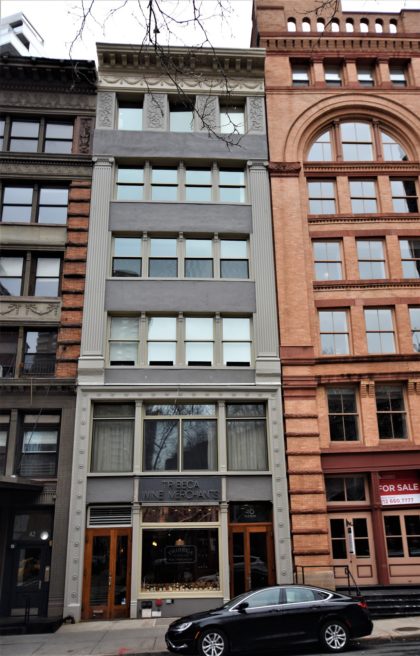 40 HUDSON
40 HUDSON
For about three decades, beginning in the mid-1960’s, the Hudson Electric Sales Co. occupied the ground floor. But industrial electric supplies would give way to toys as the Tribeca neighborhood was rediscovered. In May, 1995, Just Jake opened in the street-level shop. In reporting on the innovative store, Delcie Leimbach wrote in The New York Times, “Designed by Dean/Wolf Architects in New York, it is a toy store with a twist: children are welcome to sample most of the items on sale. There are balls to roll around on, materials for art projects, a stage that beckons young puppeteers and a carpeted ‘Book Boat’ that is lined with books.”
··················
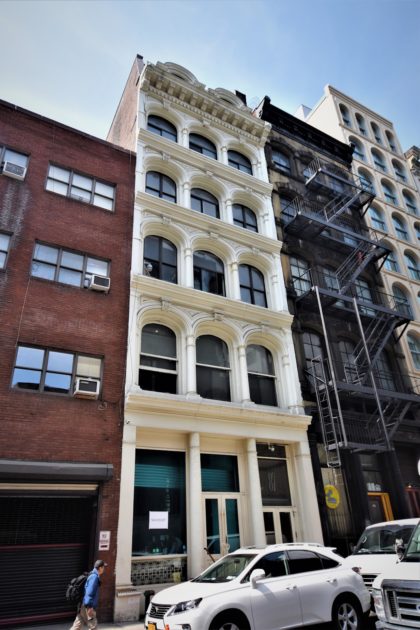 87 WALKER
87 WALKER
Oscar Smith & Son moved its headquarters into the building before 1901. The far-reaching firm had wood mills in the forest areas of New York, Maine, Vermont, Rhode Island, New Hampshire, Massachusetts, and Connecticut. Instead of producing building lumber or wood for furniture and paneling, it ground the trees for less glamorous purpose. The firm listed among its offerings sawdust, charcoal, “cordwood for fuel,” “slab wood,” and shavings. Sawdust and shavings were essential for keeping ice frozen at a time when ice boxes kept food cold in every American house, hotel and restaurant. The firm nearly had to find new headquarters not long after moving in. Fire was discovered in the building on July 13, 1902, but was quickly extinguished. Almost simultaneously another fire was discovered at No. 89 Franklin Street, two blocks away. Neither of the fires caused any damage but both were suspicious. Three days later, 10-year old John Persini and 16-year old August Ferragiari pleaded guilty to attempted arson in both instances. The boys were released, but no doubt not before receiving a severe talking-to from the judge.
··················
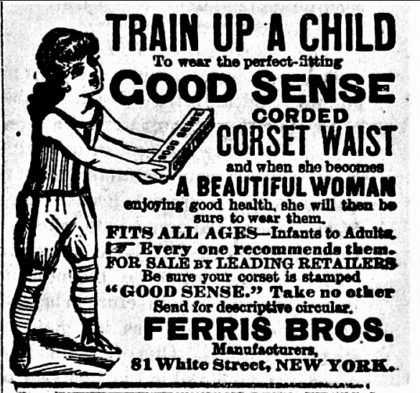 81 WHITE
81 WHITE
Acting as trustee for the estate of Mary W. Hopkins, Stephen L. Hopkins acquired the old, two-story wooden house at No. 81 White Street in 1881. Like all the brick and wooden dwellings in the neighborhood, it was soon to go. The Hopkins estate contracted architect Charles C. Haight to design a modern loft building in its place. Romanesque Revival had gained a sturdy foothold in architectural taste by now; the medieval-inspired style often relied on heavy carvings, massive arches, and muscular stonework, so it is perhaps a bit surprising that Haight chose the style for the 25-foot-wide plot. His solution was a pleasing toned-down version of Romanesque Revival with no carvings nor chunky medieval columns. Instead, the asymmetrical red brick facade was relieved by brownstone bandcourses. Among the first tenants was Ferris Bros., manufacturers of corsets. The company offered corsets for all ages of users, including (hard to believe today) infants.
··················
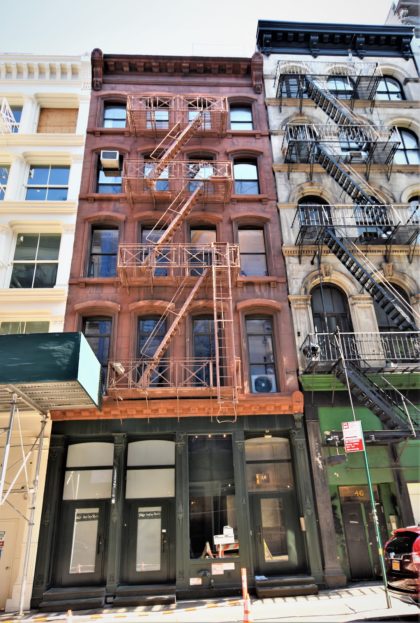 44 WALKER
44 WALKER
A 1986 renovation resulted in two apartments per floor at No. 44 Walker Street. In 2004, one apartment was home to Mark Seth Lender and his wife, Valerie Pettis. Lender, a conservation columnist for the Connecticut newspaper the Shoreline Times, envisioned an environment-friendly use for the roof. On December 5 that year, New York Times journalist John Freeman Gill reported that “they have planted their rooftop with 2,100 square feet of forest intended to provide habitat for birds and butterflies.” Lender explained, “If I plant this right you could sit here and be very quiet and you’ll see birds that’ll knock your brains out.”
··················
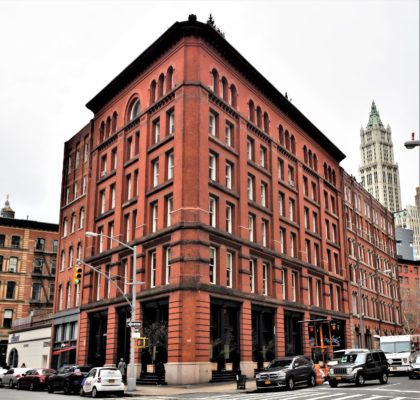 24 HUDSON
24 HUDSON
On October 18, 1981, when The New York Times food editor Craig Claiborne reported on “movable feasts” available at 162 Duane Street: “A brand new food store in Tribeca which serves appealing homemade salads and pates made with good fresh ingredients. Each picnic has a title.” Six years later, Ann Nickinson and her partner Carrie Levin opened another gourmet boutique, Good Enough to Eat. Their original store debuted on Amsterdam Avenue in 1982. Now, in 1987, they spent $200,000 to renovate space at No. 162 Duane for a larger 65-seat shop. The Times said it “specializes in homey fare such as soups, stews, muffins and meat loafs.”
··················
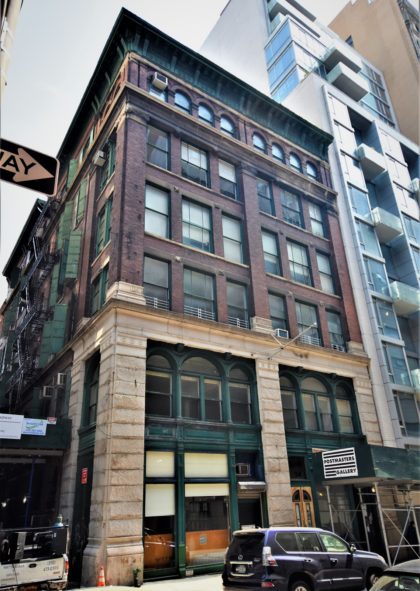 54-56 FRANKLIN
54-56 FRANKLIN
In 1899, the top floor of the building was occupied by the Home Suspender Company factory, and the fifth floor was home to the Peerless Suspender Company. On the evening of November 9, a small fire broke out in the Peerless factory. R. E. Van Der Veer, manager of the Home Suspender Company, rushed downstairs to successfully help extinguish the blaze. The following day, The New York Times reported, “After all was quiet he fell to work with such a will that when his bookkeeper left him he did not take the precaution to tell him to leave the key to the front door in the regular hiding place, so that he could get out.” It was a regrettable mistake, for when the bookkeeper got to the street door, he absentmindedly put the key in his pocket and went home. Two hours later, Van Der Veer turned out the lights and headed down the stairs. He felt around behind the radiator where the key was normally hidden. Thinking that it had possibly fallen, he groped around in the dirt under the radiator, coming up with only a few loose nails. Pounding on the door was useless. Franklin Street was deserted. The Times said, “Then he went to the top floor again, muttering things about the bookkeeper, and called up Police Headquarters on the telephone.” Three policemen arrived to rescue the imprisoned executive.















